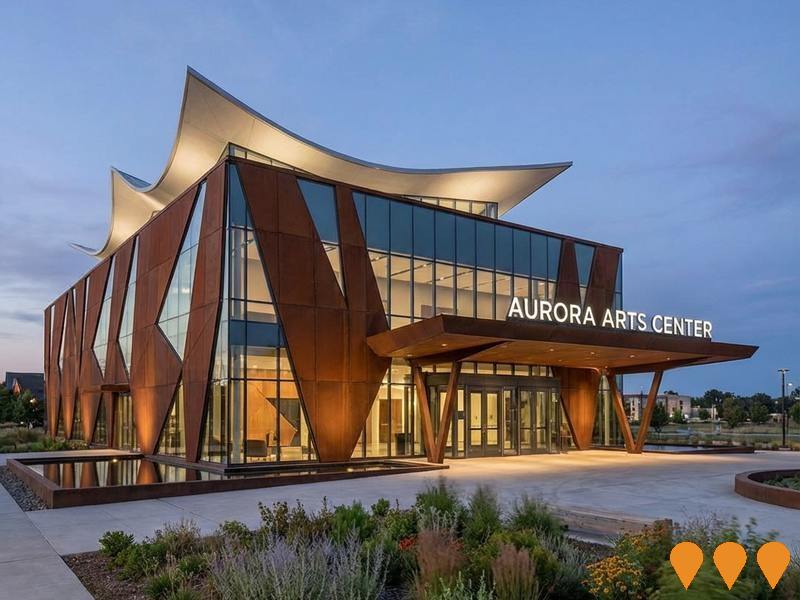Chart Color Schemes
est. as @ -- *
ABS ERP | -- people | --
2021 Census | -- people
Sales Activity
Curious about local property values? Filter the chart to assess the volume and appreciation (including resales) trends and regional comparisons, or scroll to the map below view this information at an individual property level.
Find a Recent Sale
Sales Detail
Population
An assessment of population growth drivers in Fisher reveals an overall ranking slightly below national averages considering recent, and medium term trends
Fisher's population was around 3,317 as of Aug 2025. This reflected an increase of 98 people from the 2021 Census figure of 3,219. The change was inferred from ABS' estimated resident population of 3,310 in June 2024 and additional validated new addresses since the Census date. This resulted in a density ratio of 2,099 persons per square kilometer, above national averages assessed by AreaSearch. Fisher's growth rate of 3.0% since the 2021 census exceeded the SA3 area's 0.5%, making it a regional growth leader. Overseas migration contributed approximately 70.2% of overall population gains during recent periods.
AreaSearch adopted ABS/Geoscience Australia projections for each SA2 area, released in 2024 with 2022 as the base year. For areas not covered by this data and years post-2032, age group growth rates from ACT Government's SA2 area projections were used, also based on 2022. Population projections indicated lower quartile growth nationally, with Fisher expected to increase by 2 persons to 2041, recording a decrease of 0.1% over the 17 years.
Frequently Asked Questions - Population
Development
Residential development activity is lower than average in Fisher according to AreaSearch's national comparison of local real estate markets
Fisher recorded approximately five residential properties granted approval annually over the past five financial years, from FY21 to FY25. A total of 28 homes were approved during this period, with none yet approved in FY26.
On average, each home built brought in 7.1 new residents per year between FY21 and FY25, indicating a significant demand outstripping supply, which typically drives up prices and intensifies competition among buyers. New properties are constructed at an average expected cost of $303,000. Compared to the Australian Capital Territory, Fisher has about three-quarters the rate of new dwelling approvals per person. Nationally, it ranks in the 17th percentile of areas assessed, offering limited choices for buyers and supporting demand for existing properties. This is reflective of the area's maturity and possible planning constraints.
New building activity shows a mix of 60.0% detached houses and 40.0% townhouses or apartments, expanding medium-density options across various price brackets. This shift from the area's current housing composition (83.0% houses) indicates decreasing availability of developable sites and reflects changing lifestyles requiring more diverse and affordable housing choices. Fisher has a population density of approximately 1929 people per approval, indicating a mature, established area. With stable or declining population forecasts, it may experience less housing pressure in the future, creating favourable conditions for buyers.
Frequently Asked Questions - Development
Infrastructure
Fisher has moderate levels of nearby infrastructure activity, ranking in the 47thth percentile nationally
No changes were identified by AreaSearch that could impact the region's performance. Key projects include Athllon Drive Duplication, The Hunter, Canberra Hospital Master Plan, and The Centenary Hospital for Women and Children Expansion Project. Details about these projects are listed below.
Professional plan users can use the search below to filter and access additional projects.
INFRASTRUCTURE SEARCH
 Denotes AI-based impression for illustrative purposes only, not to be taken as definitive under any circumstances. Please follow links and conduct other investigations from the project's source for actual imagery. Developers and project owners wishing us to use original imagery please Contact Us and we will do so.
Denotes AI-based impression for illustrative purposes only, not to be taken as definitive under any circumstances. Please follow links and conduct other investigations from the project's source for actual imagery. Developers and project owners wishing us to use original imagery please Contact Us and we will do so.
Frequently Asked Questions - Infrastructure
Low and Mid-Rise Housing Policy
State-wide NSW planning reforms via amendments to the State Environmental Planning Policy to enable more diverse low and mid-rise housing (dual occupancies, terraces, townhouses, manor houses and residential flat buildings up to 6 storeys) in well-located areas within 800 m of selected train, metro and light-rail stations and town centres. Stage 1 (dual occupancies in R2 zones statewide) commenced 1 July 2024. Stage 2 (mid-rise apartments, terraces and dual occupancies near stations) commenced 28 February 2025. Expected to facilitate up to 112,000 additional homes over the next five years.
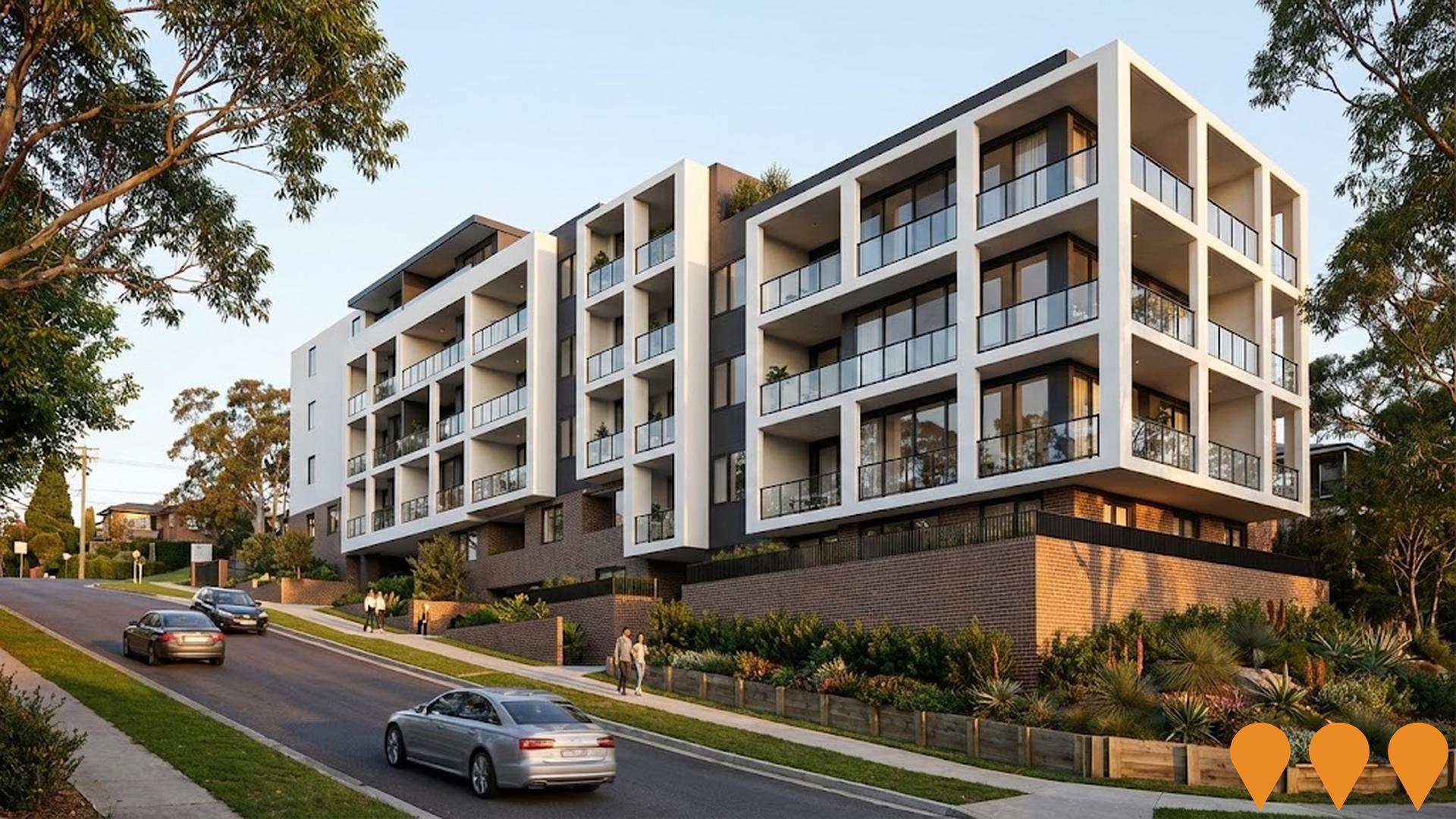
Canberra Hospital Master Plan
Long-term transformation of Canberra Hospital campus (2021-2041). The new Critical Services Building (Building 5) opened in 2023. Multiple stages are now in construction or detailed planning, including SPIRE Stage 1 (new emergency, surgical and intensive care facilities) and ongoing campus renewal works to deliver modern clinical facilities.

Canberra Light Rail Stage 4 - Woden to Tuggeranong
Proposed extension of Canberra's light rail network from Woden Town Centre south to Tuggeranong Town Centre via Mawson and the Athllon Drive corridor. This future stage aims to complete the north-south radial mass transit spine, connecting major residential, employment and activity centres while supporting bus, cycling, walking and private vehicle integration.
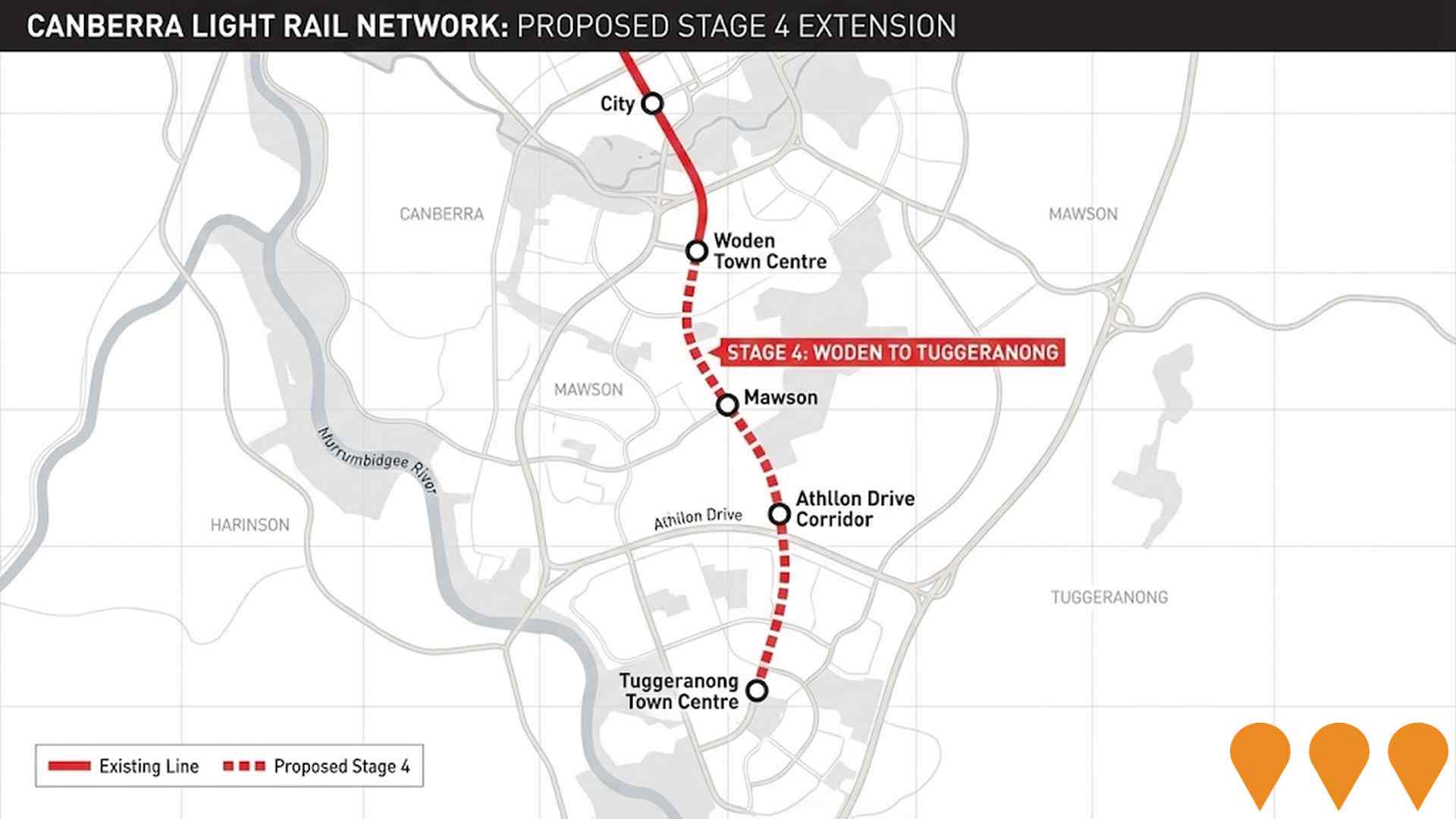
Athllon Drive Duplication
The Athllon Drive duplication project upgrades a key arterial road from Woden to Tuggeranong. It includes duplicating 2.4 km between Sulwood Drive and Drakeford Drive, and 600 m between Hindmarsh Drive and Melrose Drive. Features encompass lane duplication, new traffic lights at multiple intersections, upgraded bus stops, active travel paths for cyclists and pedestrians, water quality improvements for Lake Tuggeranong, and a new underpass under Sulwood Drive. Enabling works commenced in 2024 and continue into 2025, with main construction anticipated to span 2-3 years post-planning approvals. The initiative enhances safety, reduces congestion, and supports public transport and future urban growth.
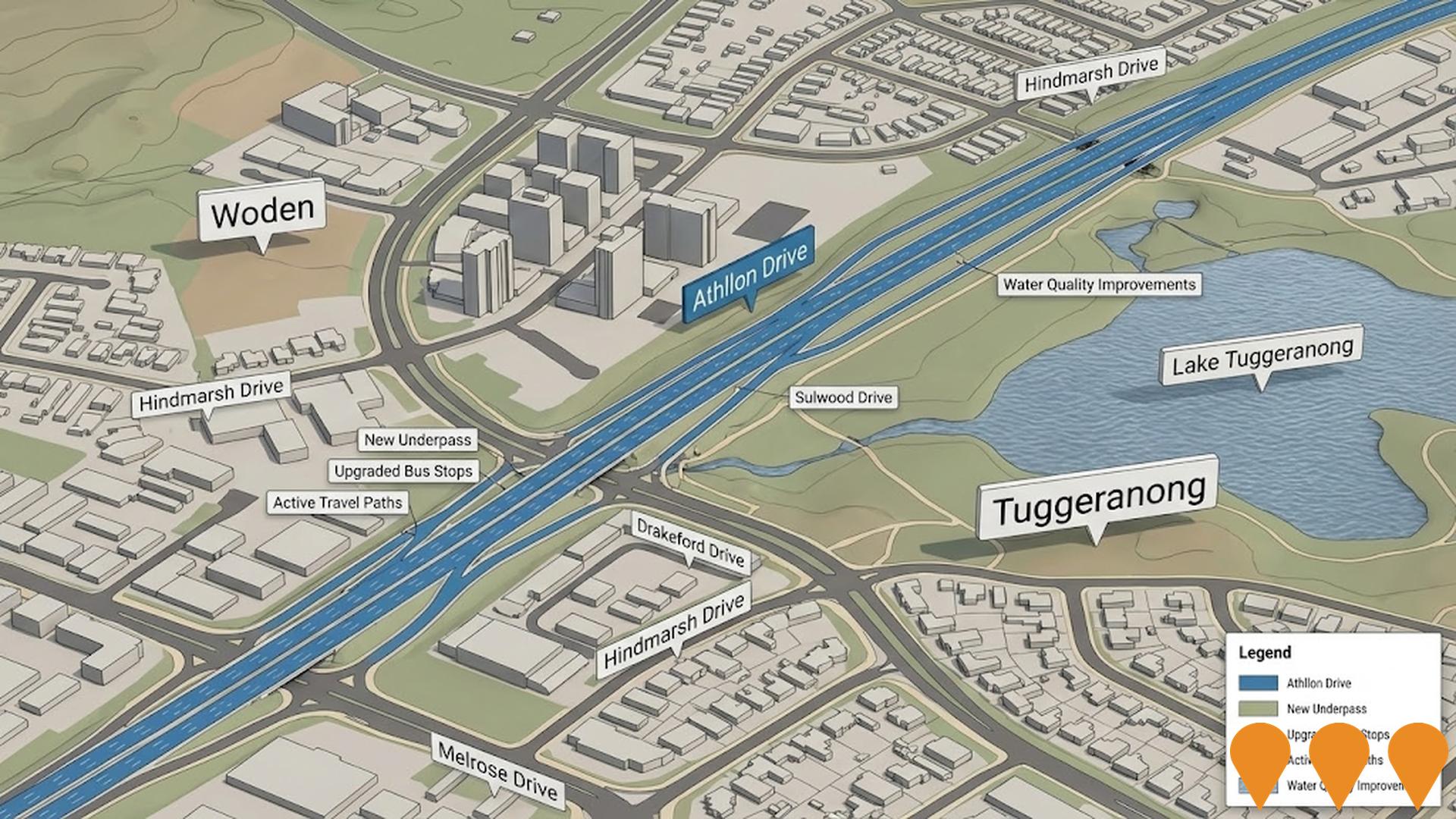
Enhanced bus and light rail corridors (Belconnen & Queanbeyan to Central Canberra)
ACT is progressing an integrated program to enhance high-frequency bus and future light rail corridors that link Belconnen and Queanbeyan with central Canberra. Light Rail Stage 2A (City to Commonwealth Park) commenced construction in early 2025 with services targeted from 2028, while planning and approvals continue for Stage 2B to Woden. The ACT Government has acknowledged and is planning upgrades for the Belconnen-to-City bus corridor as groundwork for a future east-west light rail Stage 3, and is coordinating cross-border public transport initiatives with NSW through the Queanbeyan Region Integrated Transport Plan and the ACT-NSW MoU for Regional Collaboration.
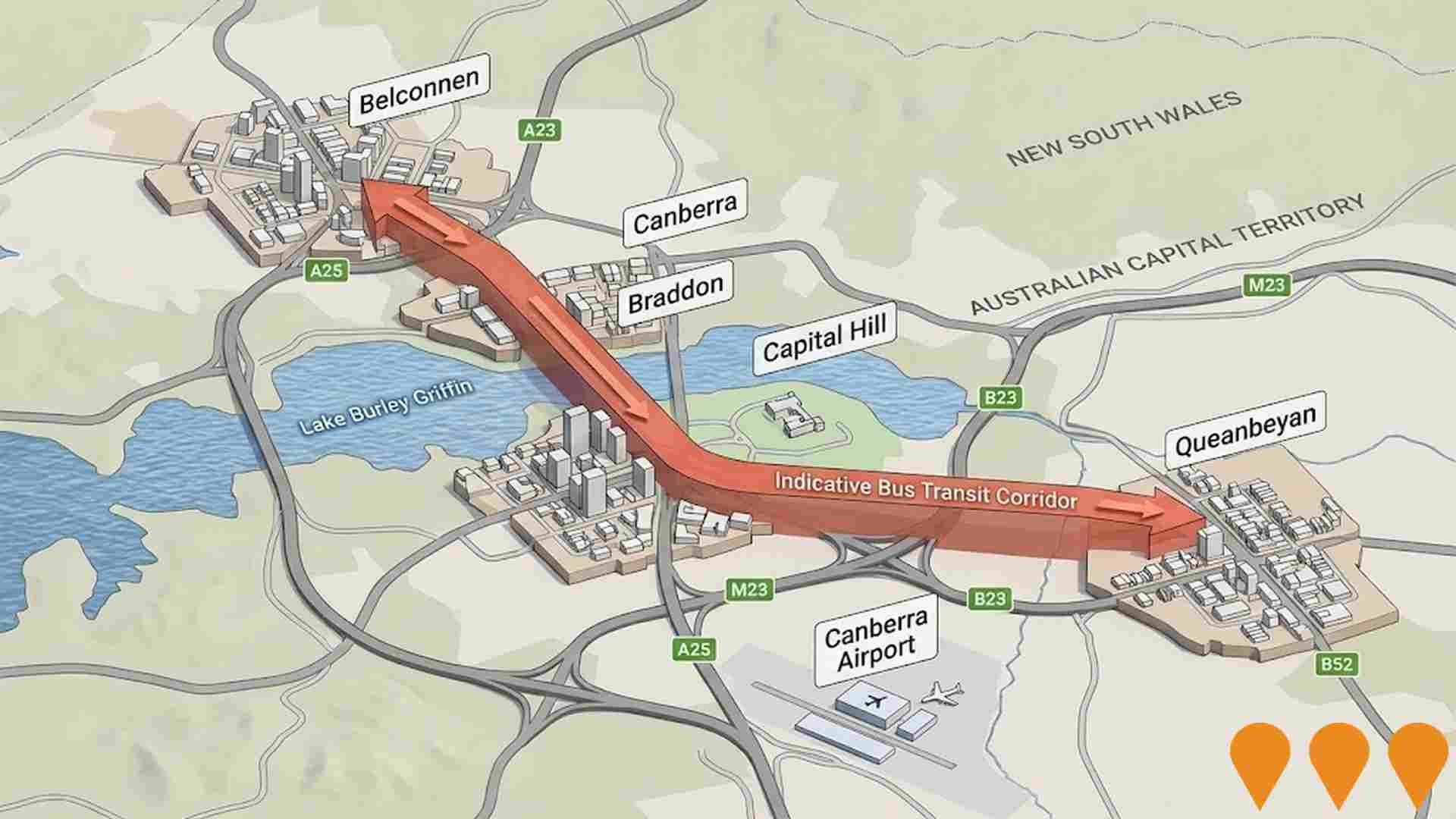
HumeLink
HumeLink is a new 500kV transmission line project connecting Wagga Wagga, Bannaby, and Maragle, spanning approximately 365 km. It includes new or upgraded infrastructure at four locations and aims to enhance the reliability and sustainability of the national electricity grid by increasing the integration of renewable energy sources such as wind and solar.
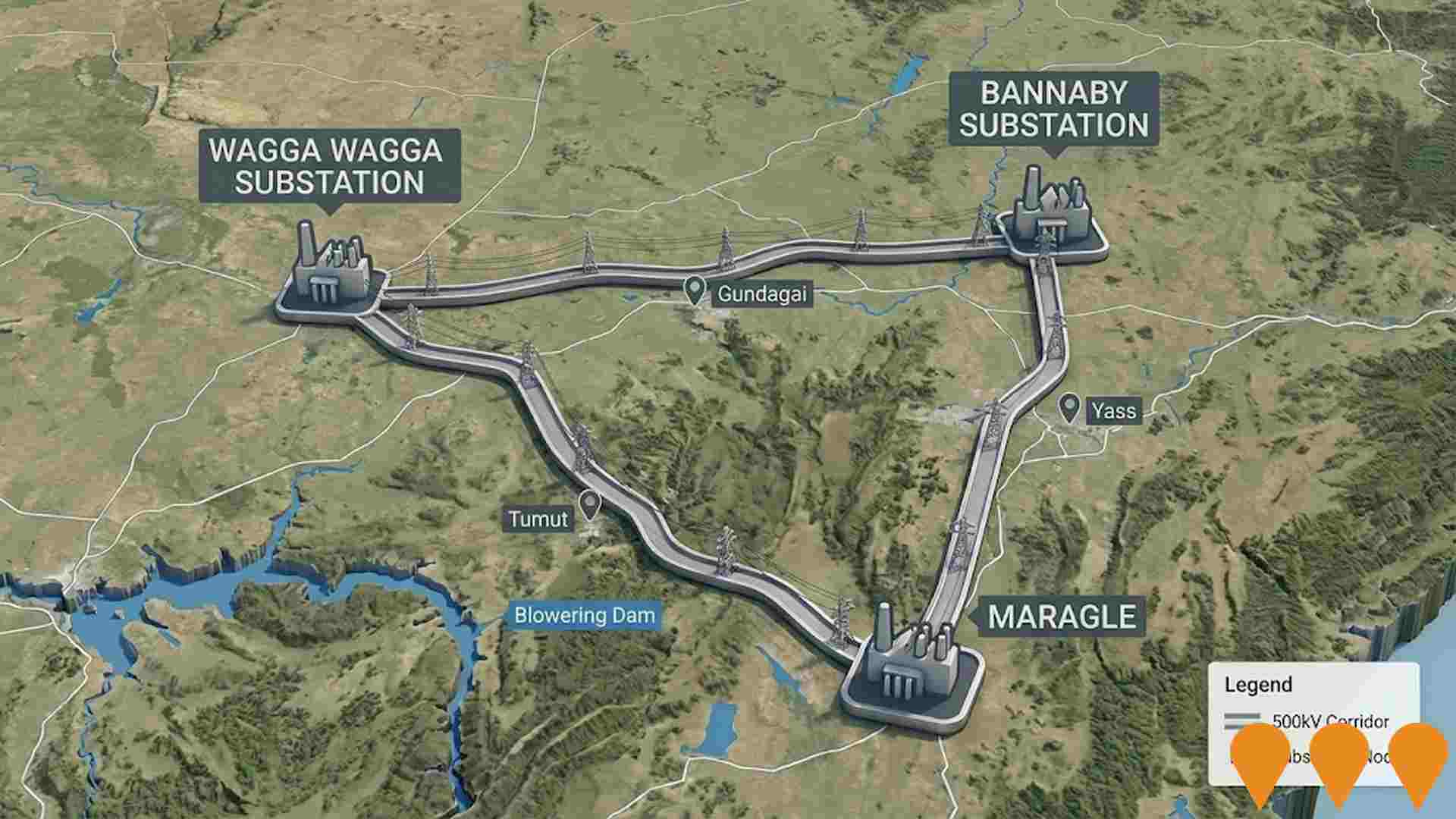
Queanbeyan Regional Integrated Transport Plan
Comprehensive transport planning initiative with 64 key actions for next 10 years. Addresses road safety, active transport connectivity, public transport availability, and future transport needs. Improved connections between Queanbeyan and ACT.
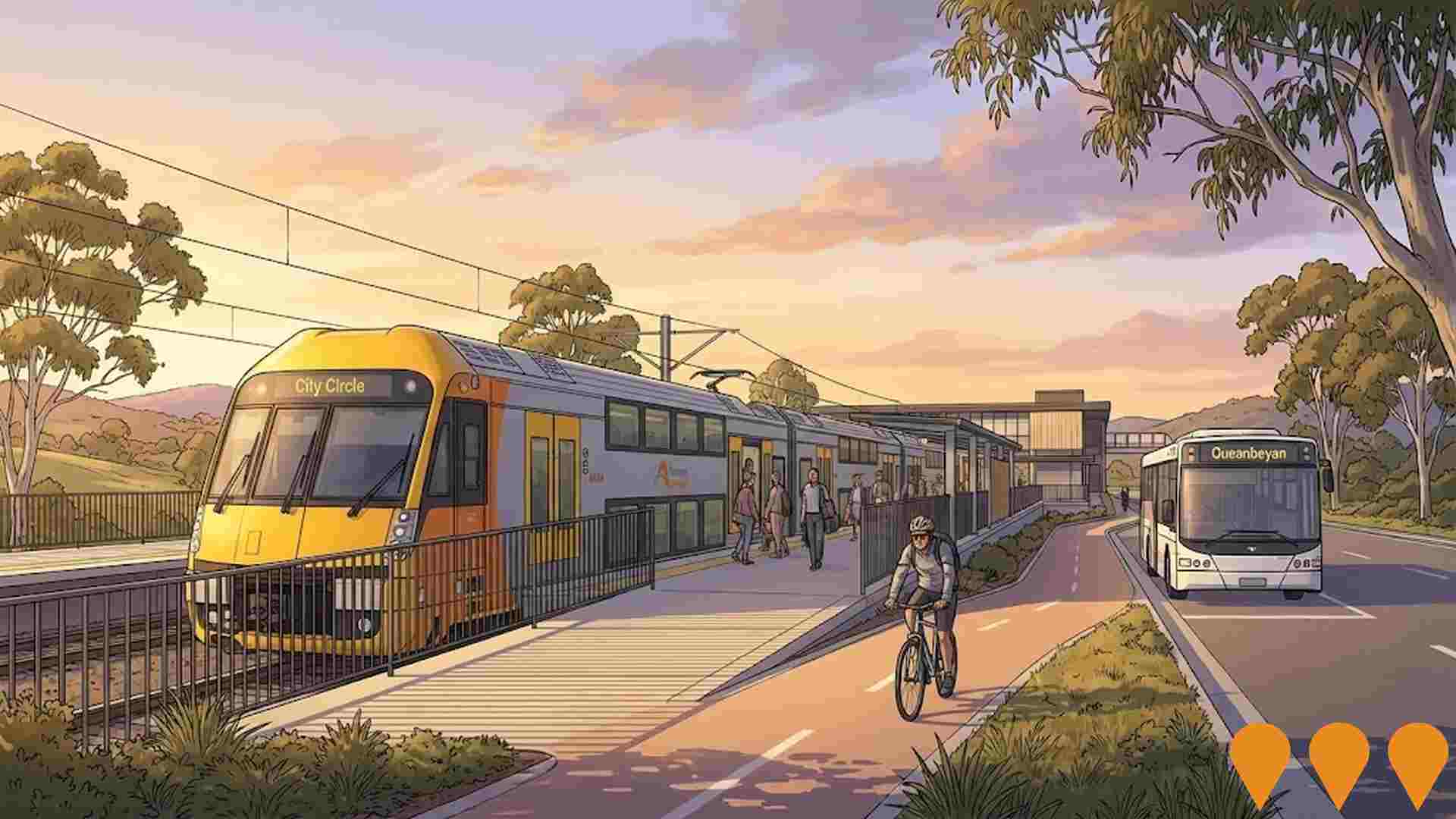
Big Canberra Battery (Williamsdale BESS)
A 250 MW / 500 MWh battery energy storage system at Williamsdale in southern Canberra, delivered by Eku Energy as Stream 1 of the ACT Government's Big Canberra Battery. Construction commenced in November 2024 with partners CPP and Tesla supplying Megapack systems. The asset will connect to Evoenergy's 132 kV network near the Williamsdale substation to provide two hours of dispatchable power, grid services and reliability for the ACT. Target operations in 2026.
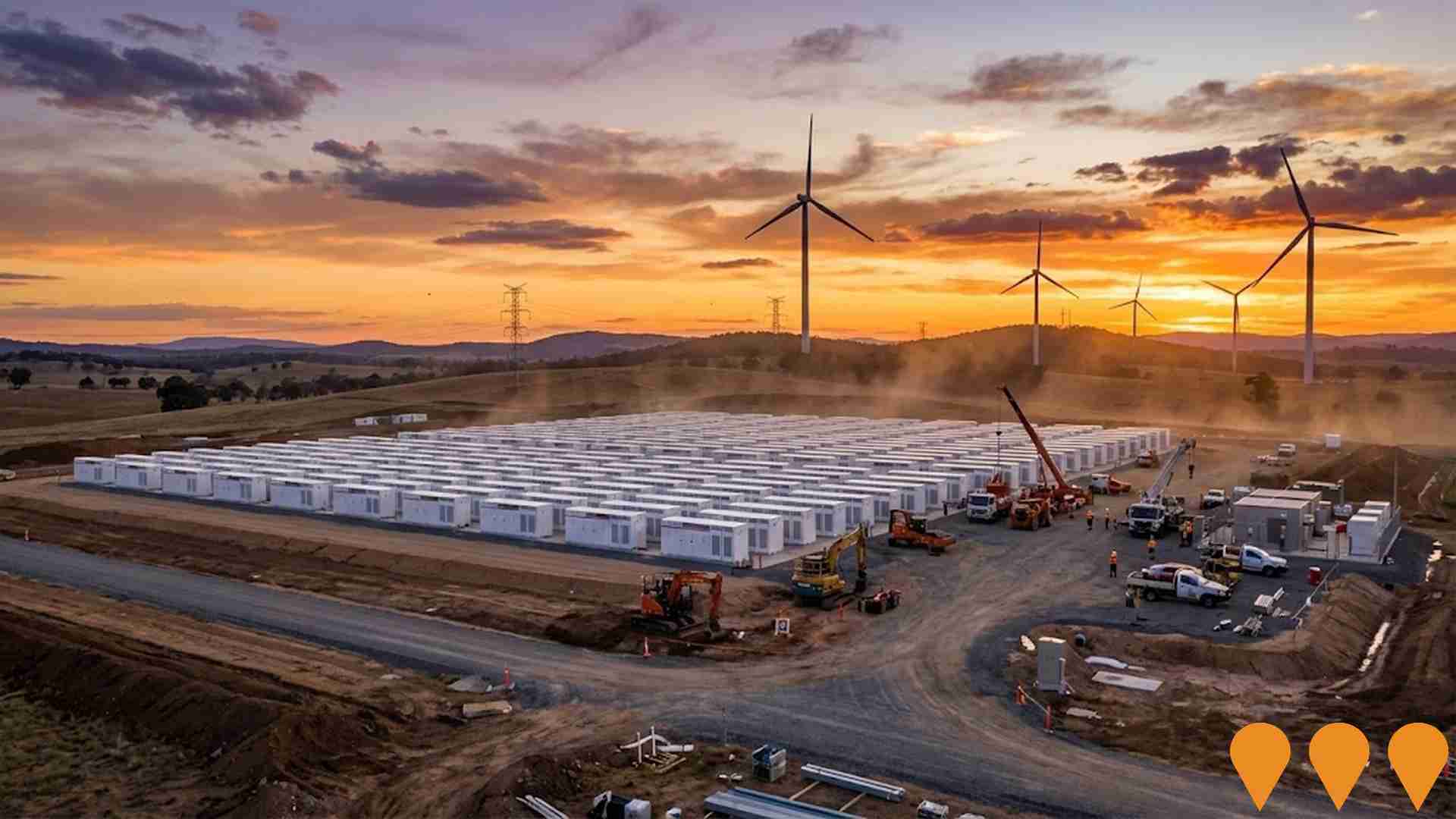
Employment
Fisher has seen below average employment performance when compared to national benchmarks
Fisher's workforce is highly educated with prominent representation in essential services sectors. The unemployment rate was 3.8% as of June 2025, with an estimated employment growth of 1.5% over the past year.
In June 2025, 1,708 residents were employed, with an unemployment rate of 4.4%, 1 percentage point higher than the Australian Capital Territory's rate of 3.4%. Workforce participation in Fisher was 64.3%, compared to the Australian Capital Territory's 69.6%. Employment is concentrated in public administration & safety (25%), health care & social assistance (20%), and education & training (15%).
Retail trade has limited presence with 4.9% employment, compared to the regional average of 6.6%. The residential area offers limited local employment opportunities, as indicated by the Census working population vs resident population count. Over a 12-month period ending June 2025, employment increased by 1.5%, while labour force grew by 1.6%, causing unemployment to rise by 0.1 percentage points. In contrast, Australian Capital Territory saw employment rise by 1.9% and unemployment fall by 0.3 percentage points. Jobs and Skills Australia's national employment forecasts from May 2025 project a 6.6% increase over five years and 13.7% over ten years. Applying these projections to Fisher's employment mix suggests local growth of approximately 6.5% over five years and 13.4% over ten years, based on simple weighting extrapolation for illustrative purposes only.
Frequently Asked Questions - Employment
Income
The economic profile demonstrates exceptional strength, placing the area among the top 10% nationally based on comprehensive AreaSearch income analysis
AreaSearch reports that based on its aggregation of the latest postcode level ATO data released for financial year 2022, Fisher had a median income among taxpayers of $68,261 with an average level of $81,206. This places it among the highest in Australia when compared to levels of $68,678 and $83,634 across Australian Capital Territory respectively. According to Wage Price Index growth of 13.6% since financial year 2022, current estimates for median income would be approximately $77,544 and average income around $92,250 as of September 2025. Census data shows that household, family and personal incomes in Fisher all rank highly nationally, between the 82nd and 91st percentiles. Income brackets indicate that 25.9% of the population (859 individuals) fall within the $1,500 - $2,999 income range, similar to the surrounding region where 34.3% occupy this bracket. Notably, a significant 39.1% earn above $3,000 weekly, reflecting pockets of prosperity that contribute to robust local economic activity. After housing costs, residents retain 86.8% of their income, indicating strong purchasing power and the area's SEIFA income ranking places it in the 8th decile.
Frequently Asked Questions - Income
Housing
Fisher is characterized by a predominantly suburban housing profile, with above-average rates of outright home ownership
Dwelling structure in Fisher, as evaluated at the latest Census, comprised 82.8% houses and 17.2% other dwellings. In comparison, Australian Capital Territory had 81.7% houses and 18.2% other dwellings. Home ownership in Fisher was 39.8%, with the remainder of dwellings either mortgaged (40.0%) or rented (20.2%). The median monthly mortgage repayment in Fisher was $2,354, above Australian Capital Territory's average of $2,251. Median weekly rent in Fisher was $415, compared to Australian Capital Territory's $420. Nationally, Fisher's mortgage repayments were significantly higher than the Australian average of $1,863, while rents were substantially above the national figure of $375.
Frequently Asked Questions - Housing
Household Composition
Fisher has a typical household mix, with a lower-than-average median household size
Family households constitute 70.5% of all households, including 34.4% couples with children, 25.1% couples without children, and 9.5% single parent families. Non-family households account for the remaining 29.5%, with lone person households at 27.6% and group households comprising 2.1% of the total. The median household size is 2.5 people, which is smaller than the Australian Capital Territory average of 2.6.
Frequently Asked Questions - Households
Local Schools & Education
Fisher shows strong educational performance, ranking in the upper quartile nationally when assessed across multiple qualification and achievement indicators
In Fisher, 43.3% of residents aged 15+ have university qualifications, surpassing Australia's 30.4%. Bachelor degrees are most common at 25.6%, followed by postgraduate qualifications (12.3%) and graduate diplomas (5.4%). Vocational credentials are held by 27.0% of residents aged 15+, with advanced diplomas at 12.2% and certificates at 14.8%. Educational participation is high, with 30.3% currently enrolled in formal education.
This includes 11.4% in primary, 8.5% in secondary, and 4.5% in tertiary education. Schools appear to be located outside Fisher's immediate boundaries, requiring families to access schools in neighboring areas.
Frequently Asked Questions - Education
Schools Detail
Nearby Services & Amenities
Transport
Transport servicing is good compared to other areas nationally based on assessment of service frequency, route connectivity and accessibility
The analysis of public transport in Fisher shows that there are 16 active transport stops currently operating within the area. These stops service a mix of bus routes, with a total of 4 individual routes providing 685 weekly passenger trips combined. The accessibility to these transport services is rated as excellent, with residents typically located approximately 196 meters away from their nearest transport stop.
On average, there are 97 trips per day across all routes, which equates to around 42 weekly trips per individual stop.
Frequently Asked Questions - Transport
Transport Stops Detail
Health
Health performance in Fisher is lower than average with common health conditions somewhat prevalent across the board, though to a considerably higher degree among older age cohorts
Fisher faces significant health challenges with common health conditions prevalent across all age groups, but more so among older cohorts. Private health cover is exceptionally high at approximately 61% of the total population (2016 people), compared to the national average of 55.3%.
The most common medical conditions are arthritis and mental health issues, affecting 9.0% and 8.5% of residents respectively. A total of 67.5% of residents declare themselves completely clear of medical ailments, compared to 66.3% across the Australian Capital Territory. The area has 19.0% of residents aged 65 and over (631 people), which is lower than the 20.6% in the Australian Capital Territory. Health outcomes among seniors require more attention than those of the broader population.
Frequently Asked Questions - Health
Cultural Diversity
The level of cultural diversity witnessed in Fisher was found to be above average when compared nationally for a number of language and cultural background related metrics
Fisher's cultural diversity was above average, with 23.3% of its population born overseas and 16.7% speaking a language other than English at home. Christianity was the main religion in Fisher, making up 45.1% of people. Hinduism showed overrepresentation in Fisher at 2.8%, compared to the Australian Capital Territory's 2.0%.
The top three ancestry groups were English (25.9%), Australian (24.9%), and Irish (9.8%). Hungarian, French, and Croatian ethnicities had notable divergences: Hungarian was overrepresented at 0.5% in Fisher versus 0.6% regionally, French at 0.8% versus 0.7%, and Croatian at 1.0% versus 0.9%.
Frequently Asked Questions - Diversity
Age
Fisher's population is slightly older than the national pattern
The median age in Fisher is 40 years, which exceeds the Australian Capital Territory's average of 35 years and is slightly higher than the Australian median of 38 years. Compared to the Australian Capital Territory, Fisher has a higher proportion of residents aged 75-84 (8.9%) but fewer residents aged 25-34 (11.2%). According to the 2021 Census, the population aged 15-24 grew from 9.4% to 10.7%, while the 75-84 cohort increased from 7.7% to 8.9%. Conversely, the 65-74 age group declined from 8.9% to 7.2%. By 2041, Fisher's age composition is projected to change significantly. The 85+ population is expected to grow by 58%, reaching 149 people from 94. This growth is primarily driven by the aging population dynamic, with those aged 65 and above comprising 67% of the projected growth. Conversely, population declines are projected for the 45-54 and 5-14 age groups.


